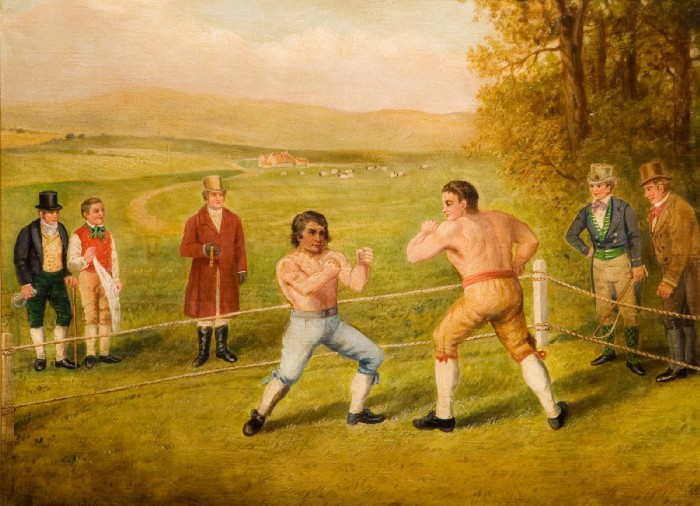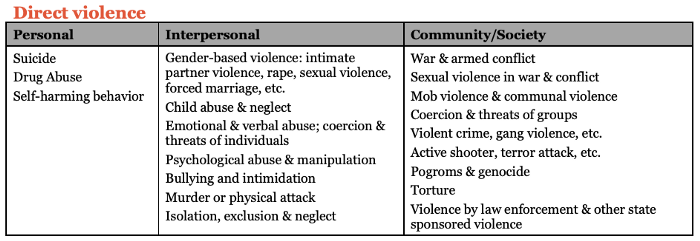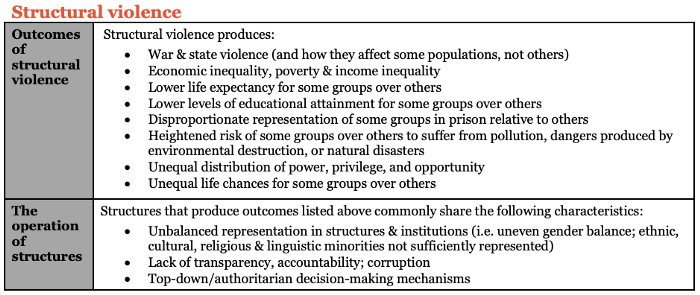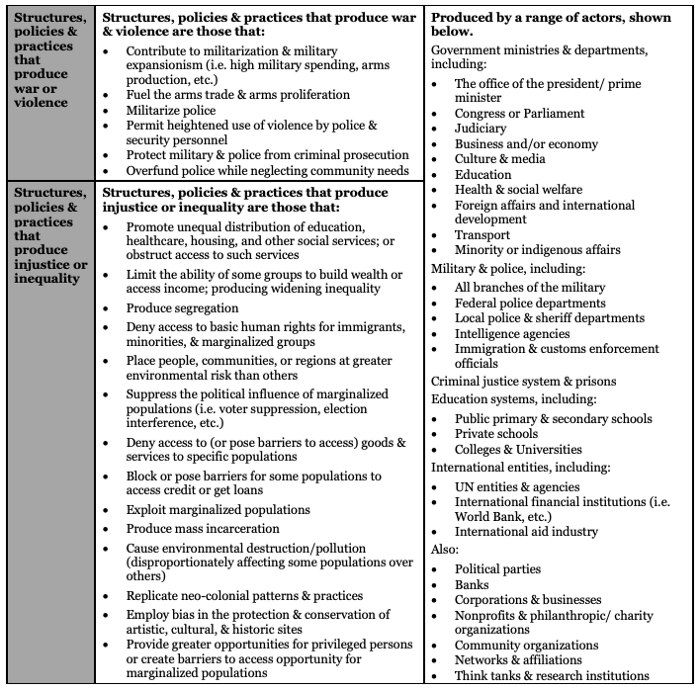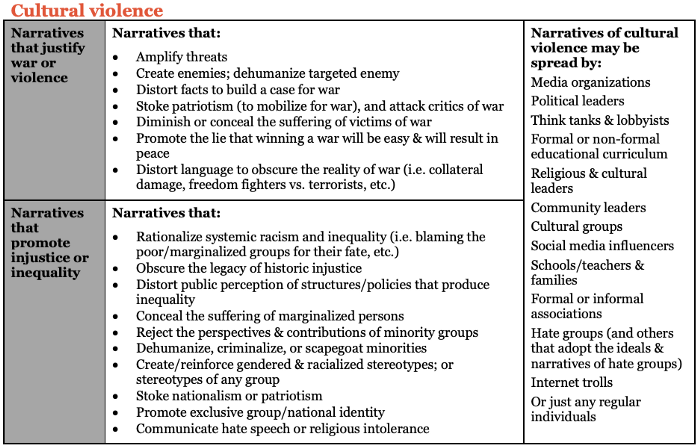A Typology of Violence
TMS PEACE JOURNALISM, 27 Jul 2020
Taylor O’Connor | Medium - TRANSCEND Media Service
Mapping Direct, Structural and Cultural Violence
“An unjust law is itself a species of violence. Arrest for its breach is more so.” — Gandhi
21 Jul 2020 – During college, I hung out a lot with the activist types and other students who were definitely more socially engaged than myself. I read lots of books, though never really in the subject I was meant to be studying. I was more interested in reading about social justice issues, history (that you don’t learn in school), Eastern philosophy, and stuff like that.
There was often a lot of discussion about structural violence and cultural violence in the circles I frequented, though I never really understood the concepts. And if I’m being real, few of those I hung around with likely had a solid grasp of the concepts.
It wasn’t until some years later, when I pursued a Masters in the field of Peace and Conflict Studies where I learned a bit more about these terms and where they came from. Even then, what I got was a more academic take on the terms, and it took me some years to recognize them readily and everywhere, beyond just the few examples I studied.
The problem I find is that these concepts are often too academic for most people to grasp. Even those studying them in academic settings may rarely apply them in practical settings. I think that’s why it never really ‘clicked’ for me when I was in college or even in my post-grad. But for those idealists and dreamers out there like me, the ability to understand and recognize concrete examples of these can profoundly influence your ability to create any form of change in the world around you, whether as an individual or as part of a group.
***
Do a google search on the term ‘structural violence.’ You’ll find a lot of academic articles, but there’s not much out there that is publicly available. And if you seek to find a decent framework to help you understand the various forms of violence and recognize examples of them, good luck.
The World Health Organization has a typology of violence, but it is limited to interpersonal violence. This is typical. Many others have frameworks similar to this that only cover the scope of what we would classify as ‘direct violence.’ Even then, they don’t cover things like war or other forms of large-scale violence. The main focus is ‘interpersonal violence.’
Now don’t get me wrong. The types of interpersonal violence they include are harmful, and we should be addressing them. But if our understanding of violence is only limited to these types of violence, then we are only scratching the surface. And this neglect in itself is incredibly harmful. As you’ll see, we may even recognize this as a form of violence in itself.
If I may quote the Dalai Lama,
“Of course war and the large military establishments are the greatest source of violence in the world. Whether their purpose is defensive or offensive, these vast, powerful organizations exist solely to kill human beings.”
Gandhi saw it too…
“Poverty is the worst form of violence.”
I figure, no typology of violence is complete if we aren’t considering a broad range of forces that produce systemic violence, war, and things like poverty. Certainly, these do not occur in a vacuum. They are a product of the structures that form our society and the cultural forces that uphold them. If they produce violence, they are a form of violence.
So since there’s very little out there that properly maps the full scope of violence to my liking, and after years of rolling these concepts over in my head, looking out for examples of them, I figured I’d take a crack at it. After all, it is those types of violence we don’t see which cause the most widespread suffering. Shedding a little light on it I hope will contribute to others finding ways to alleviate some of this suffering, if only a little.
A Typology of Violence
These types of violence were first laid out by peace studies scholar Johan Galtung, back in 1969 when he elaborated on the concept of structural violence (see HERE), and followed up in 1990 with an expose on cultural violence (see HERE). These were and are to this day discussed predominantly in academic circles. I do think there is a lot of additional academic literature on these too, but most of it I (and most people) don’t have access to anyhow as you need to pay for it or have a membership to specific academic journals/databases.
So I’ve gone my own way here and produced more practical explanations that I hope will be more widely understood to anyone outside academia (i.e., most of us normal humans). I’ve compiled these explanations, and a subsequent visual typology by joining what I learned from the old academic stuff with observations from my lived experience.
Another reason for the typology is that, for nearly every explanation of these terms I see, when they cite examples, it’s always the effects of structural and cultural violence. They’ll talk about poverty, or some groups suffering (and dying) from diseases at disproportionately higher rates than others, or how police violence affects some communities more than others, etc. But in the end, these are effects of cultural and structural violence, not the cultural and structural forces themselves. So with the typology, I hope to help you recognize these.
So here is the typology below, covering three key terms: direct violence, structural violence, and cultural violence, with introductory explanations for each term.
Direct violence
Direct violence needs little introduction. We get it. It is what comes to mind first when we think of violence. It is easy to identify and, therefore, what we tend to focus on when we talk about addressing violence. Existing frameworks tend to focus on what you see in the ‘interpersonal’ box, perhaps including the ‘personal’ box, but seldom cover the scope of what you see in the third box.
People will mobilize to stop gender-based violence, end a war, or something like that. But the problem is that we’re only scratching the surface here. It’s the tip of an enormous and grotesque iceberg of violence. It is the other forms of violence that produce widespread direct violence.
Check out my typology of direct violence below. You’ll get the idea. And I hope it is a good frame of reference for when we get to the other types of violence, as they are all connected.
Structural violence
So here’s where we dig deeper on violence. I’ll start with Galtung because he’s the man on this. He invented it, so let’s see what he’s got to say. Here are a few quotes plucked from his 1969 academic article on structural violence:
- “The general formula behind structural violence is inequality, above all in the distribution of power.”
- “If people are starving when this is objectively avoidable, then violence is committed.”
- “Structural violence is silent, it does not show — it is essentially static, it is the tranquil waters.”
Structural violence is often harder for people to understand because there is no clear, single victim or perpetrator that we can point to, as is the case for direct violence. Structural violence is more indirect. Many people are involved in producing it, and many people suffer because of it.
Structural violence can be characterized by the systematic ways in which some groups are obstructed in their ability to access opportunities, healthcare, education services, housing, information, transportation, or other goods and services. While it manifests in unique ways depending on the context, structural violence results in the uneven distribution of wealth, power, and access to resources.
Structural violence is ‘structural’ because it is embedded within political and economic structures, and it is ‘violence’ because it causes harm to people. While in some extreme situations, structural violence disrupts the ability of its victims to meet their most basic human needs, everywhere it produces unequal life chances for some. In some contexts, structural violence manifests explicitly as political repression or overt obstruction from access to goods and services. In others, forces perpetuating structural violence operate in more subtle ways. Structural violence may also be produced by systems, practices, policies, or norms adopted by institutions, structures, organizations, or groups.
Check out my typology of structural violence below:
Cultural violence
Cultural violence is even less commonly understood than the term structural violence, so I’ll elaborate a bit more.
And we should start again with Galtung as he’s the man who invented these terms. In his 1990 academic article, Galtung describes cultural violence in the following ways:
- “Cultural violence’ is defined here [i.e., this academic article] as any aspect of a culture that can be used to legitimize violence in its direct or structural form.”
- “Cultural violence makes direct and structural violence look or feel ‘right.’”
In his 1969 article, he also noted, “The object of personal [i.e., direct] violence perceives the violence, usually, and may complain — the object of structural violence may be persuaded not to perceive this at all.” And that “Structural violence may be seen as about as natural as the air around us.” This is all the handiwork of cultural violence, described before he created the term ‘cultural violence’.
Cultural violence includes the multitude of approaches that cultural forces take to justify direct violence, normalize structural violence, and to distort reality so that the effects of these are less visible. It is a necessary component of war and state violence, and it includes all the cultural forces that rationalize systems of inequality that make extreme poverty and injustice of any kind possible.
Political leaders, religious leaders, corporations, media entities, or other elite interests generating profit or otherwise benefiting from direct and structural violence use cultural violence to protect their interests. They leverage their influence, employing numerous strategies to diminish, block, or render invisible the humanity of persons or groups suffering from the effects of these.
They may employ creative methods to distract public attention, spread misinformation, promulgate discriminatory perceptions of marginalized groups, or blame victims of direct and structural violence for their fate. They may adapt language, utilize a diversity of media outlets, lobby political leaders, or influence educational content to craft public perceptions. They may use persons of authority to present rational arguments to support their usage of violence, rationalize inequality, or denounce those acting against their interests. In some cases, they employ ‘experts’ or ‘academics’ to generate (often unsound) research studies or scientific data in support of their interests.
Like structural violence, there is not one clear victim or perpetrator. Effects of cultural violence are produced by a number of cultural forces acting in tandem. But it is often easy to identify those who employ cultural violence. In the United States, for example, something like Fox News can be observed as a mouthpiece of cultural violence, along with numerous conservative political leaders past and present. I’m sure there is an equivalent in any country.
Some forms of cultural violence can be hard to detect, particularly in our own contexts, and especially for those who don’t experience the effects of structural violence. But the consequences of it are very real and very harmful. Common beliefs and social norms informed by cultural violence can become so entrenched in a given culture that they are reproduced uncritically across generations. Cultural violence is also visible in a number of elements of culture like monuments, holidays, language, etc.
Check out my typology of cultural violence below:
 _____________________________________________
_____________________________________________
Free downloadable handout (in PDF): Typology of violence (July 2020)
 Taylor O’Connor, MA Peace Education, UN Mandated University for Peace, 2009. Taylor is a rebellious peacebuilder, peace educator, and founder of the blog Everyday Peacebuilding. Freelance Peacebuilding Technical Specialist by day, he’s working to make insights from peacebuilding practice relevant and practical to wider audiences. If you’d like to learn some creative and strategic ways you can build peace in your life and in the world around you, get his free handout 198 Actions for Peace – also good for educational settings.
Taylor O’Connor, MA Peace Education, UN Mandated University for Peace, 2009. Taylor is a rebellious peacebuilder, peace educator, and founder of the blog Everyday Peacebuilding. Freelance Peacebuilding Technical Specialist by day, he’s working to make insights from peacebuilding practice relevant and practical to wider audiences. If you’d like to learn some creative and strategic ways you can build peace in your life and in the world around you, get his free handout 198 Actions for Peace – also good for educational settings.
Tags: Conflict, Conflict Analysis, Cultural violence, Education for Peace, Johan Galtung, Peace Research, Peace Studies, Structural violence, Violence, Violent conflict
DISCLAIMER: The statements, views and opinions expressed in pieces republished here are solely those of the authors and do not necessarily represent those of TMS. In accordance with title 17 U.S.C. section 107, this material is distributed without profit to those who have expressed a prior interest in receiving the included information for research and educational purposes. TMS has no affiliation whatsoever with the originator of this article nor is TMS endorsed or sponsored by the originator. “GO TO ORIGINAL” links are provided as a convenience to our readers and allow for verification of authenticity. However, as originating pages are often updated by their originating host sites, the versions posted may not match the versions our readers view when clicking the “GO TO ORIGINAL” links. This site contains copyrighted material the use of which has not always been specifically authorized by the copyright owner. We are making such material available in our efforts to advance understanding of environmental, political, human rights, economic, democracy, scientific, and social justice issues, etc. We believe this constitutes a ‘fair use’ of any such copyrighted material as provided for in section 107 of the US Copyright Law. In accordance with Title 17 U.S.C. Section 107, the material on this site is distributed without profit to those who have expressed a prior interest in receiving the included information for research and educational purposes. For more information go to: http://www.law.cornell.edu/uscode/17/107.shtml. If you wish to use copyrighted material from this site for purposes of your own that go beyond ‘fair use’, you must obtain permission from the copyright owner.
Read more
Click here to go to the current weekly digest or pick another article:
TMS PEACE JOURNALISM:
